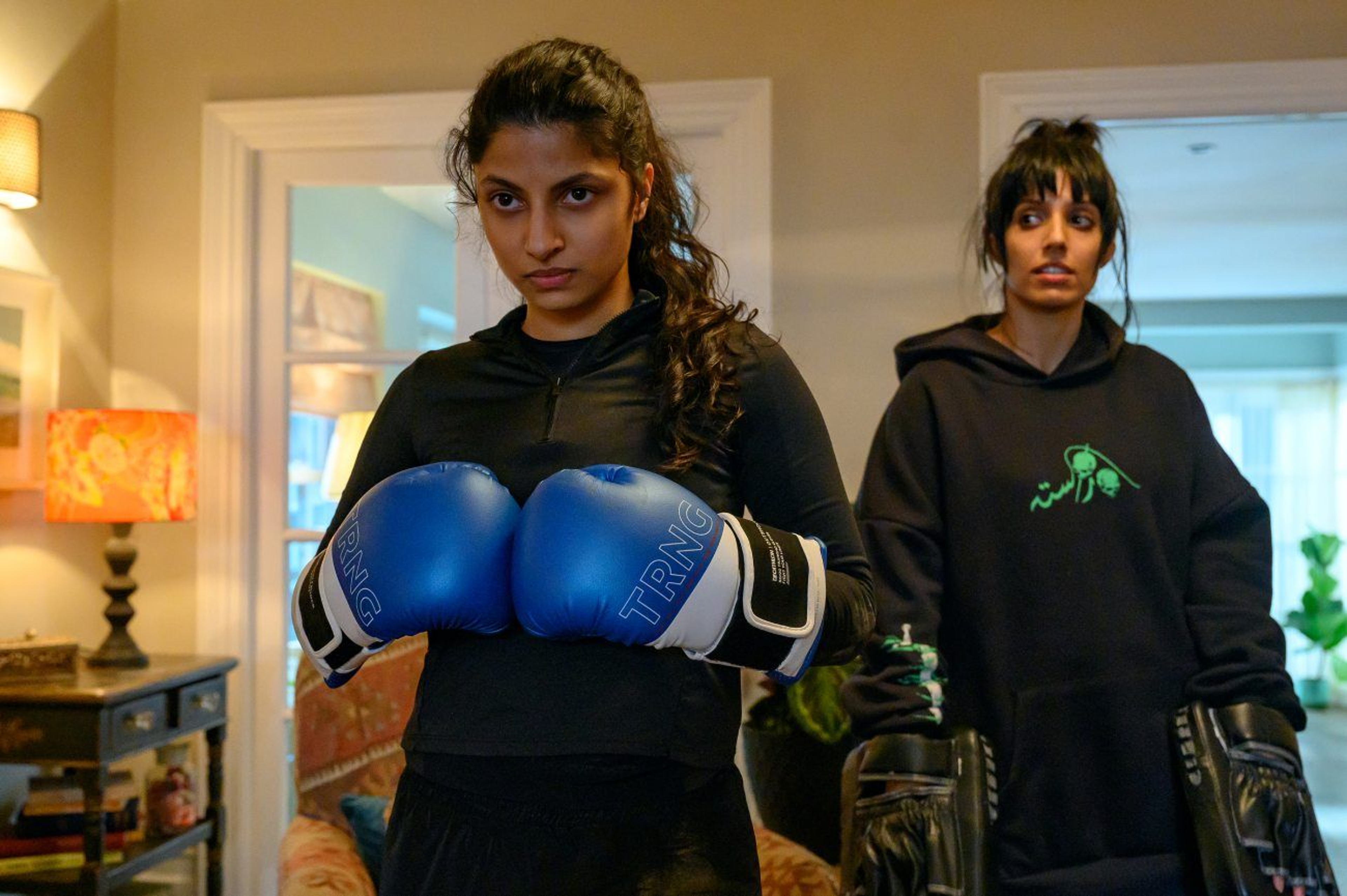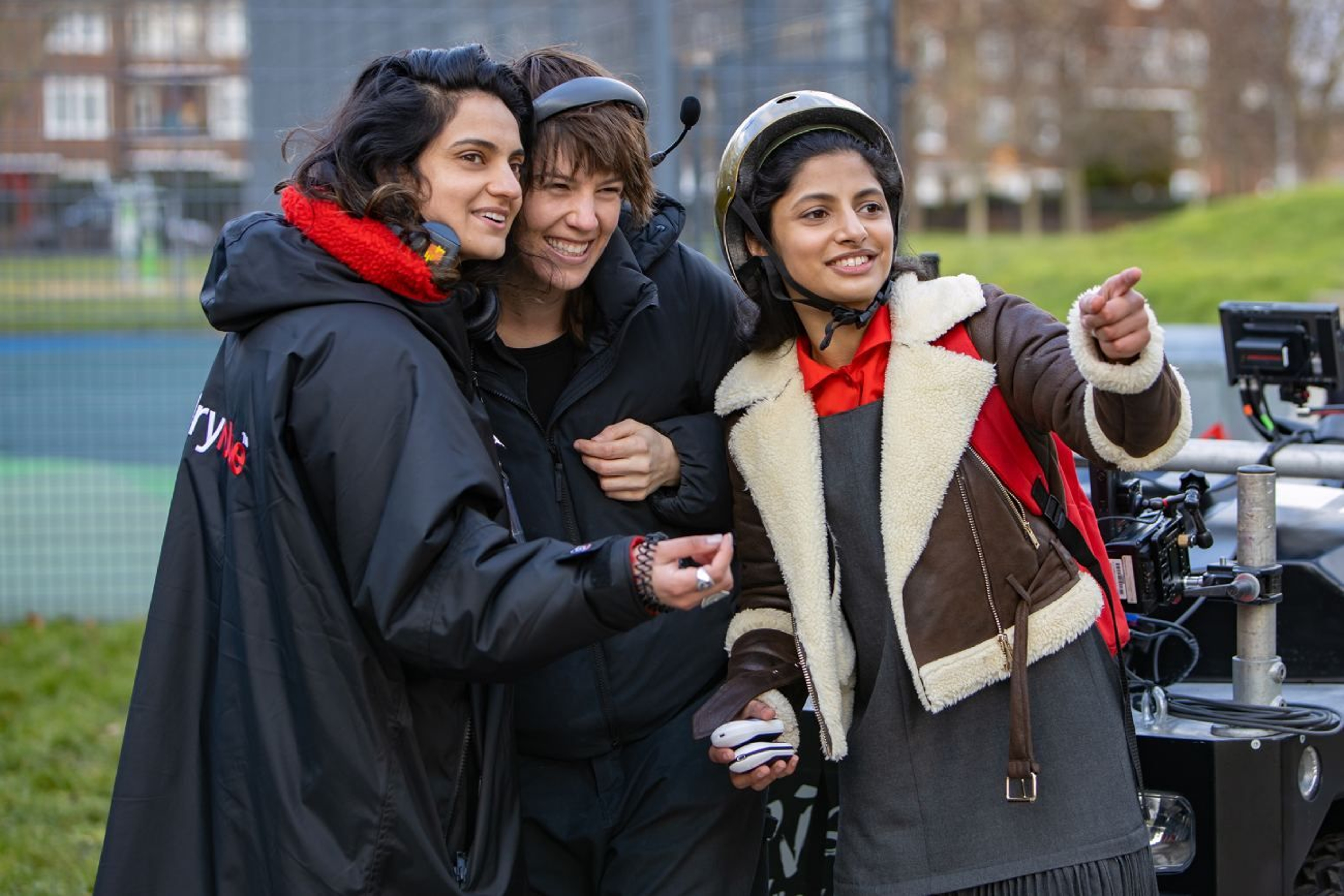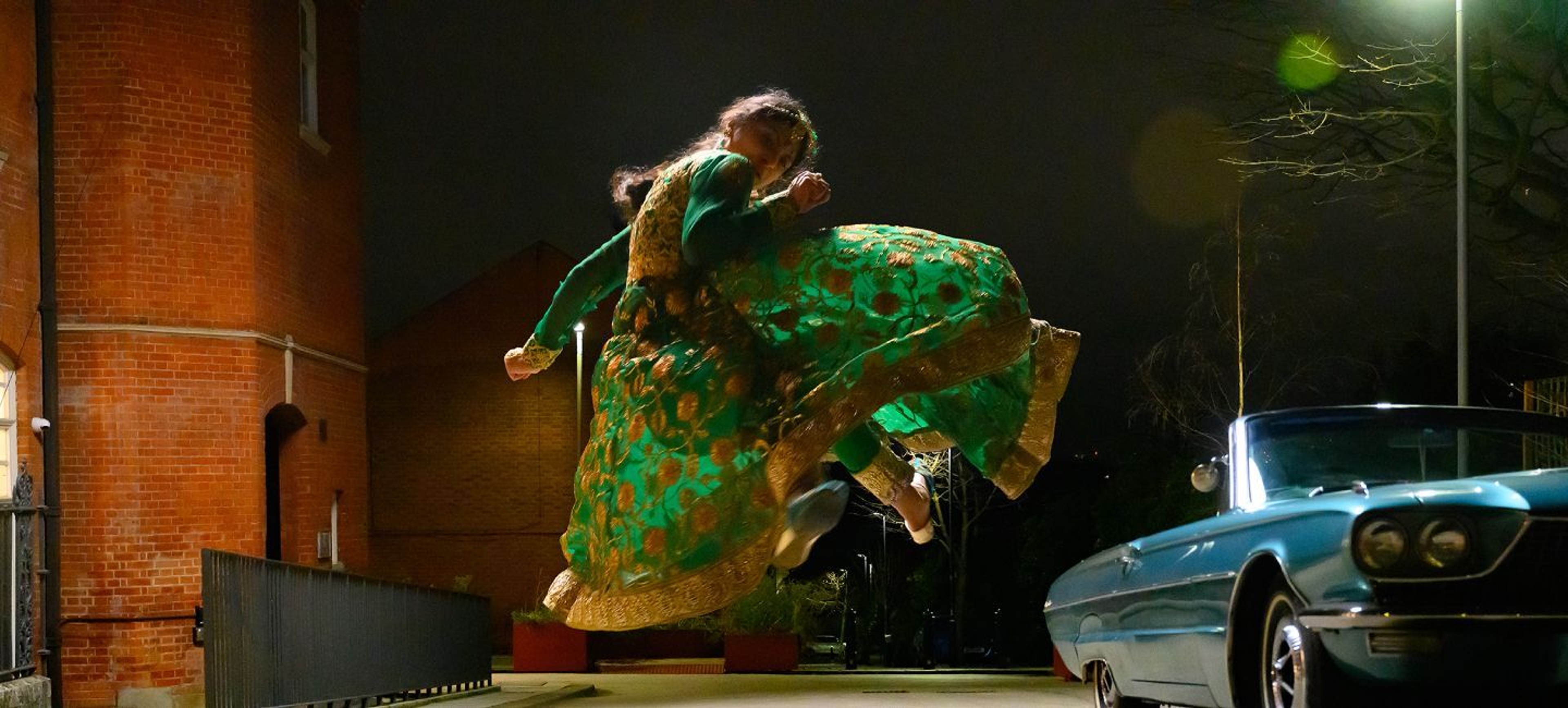In Polite Society, Nida Manzoor weaves together different genres and styles to create a dazzlingly fun film about sisterhood. Ria Khan (Priya Kansara) dreams of becoming a professional stuntwoman. Her sister, Lena (Ritu Arya), is a promising artist until the dapper Salim (Akshay Khanna) sweeps her off her feet with a marriage proposal. To reclaim her best friend, Ria hatches a fantastical plot to disrupt the big wedding and bring her sister home.
Filled with flying punches and furious punchlines, the film takes no prisoners. For Collider, “When it all takes to the air and kicks you squarely in the head, Polite Society proves to be a triumphant action comedy with wonderful characters you only wish you could get to know even more.”
To capture her vision, Manzoor turned to cinematographer Ashley Connor, whose work in music videos and acclaimed features like The Miseducation of Cameron Post demonstrates her knack for ingenuity and imagination. Her creative spirit reverberated with the cast. In the production notes, Arya recalls, “Our DP, Ashley, is such a badass and she was always trying out different things.”
Connor—who is actually a black belt herself—fought hard to keep the action flowing and the emotion real, so we spoke with her about filming wirework, capturing the sisters’ feelings, and having fun with genre.
The official trailer for Polite Society

Director of photography Ashley Connor. Photo: Shara Shatz
How did you get involved in shooting Polite Society?
I had shot The Miseducation of Cameron Post with the producer Olivier Kaempfer and Cecilia Frugiuele, who runs Parkville Picture. Olivier contacted me while I was shooting a sci-fi series for Amazon and told me, “I've got a script that I think you’ll love. I think you're also the right person for it.” I read the screenplay, and I loved it. I'm a black belt in Aikido, so I’ve always wanted to do a martial arts movie, and this one just had so much heart. It felt like a perfect crossover of all my interests. It checked every box.
What did you see as your biggest creative challenge?
I knew it was going to be a wirework movie, which was very exciting but also difficult to accomplish on a certain budget. To pull this off, you need to rely on everyone putting their best efforts into the right places. Even though I hadn’t worked with Nida before, I had seen her series We Are Lady Parts and loved it. When I started thinking about the scenes in my head, I knew there were the fight scenes, but there was also this large wedding. The challenge for me was to figure out how it would all come together and what the approach would be.
There are great fights but also scenes that are very dramatic and intimate. How did you balance the tone?
A lot of my film work has been very intimate and personal. I tend to do more serious art films, but I also like more playful work, like dance and music videos. This project connected both sides of my experience equally. I love making movies in order to tell stories with heart. This movie is about sisters, which is a very special kind of relationship. Even when we were shooting the fight scenes, I wanted them to speak to what a sisterly relationship is. As a DP, I never just shoot something to look cool. I question the why of it all. I want to investigate with the director, “Why are we doing this? Why is this fight so heartbreaking? What truth does it get to?”

Ria (Priya Kansara) and Lena (Ritu Arya) in Polite Society
Can you talk about how you designed the fight scenes?
Nida really wanted the fights to be grounded in what Priya was going through. This is a movie about a young teenage girl who wants to be a stuntwoman, so obviously, the character doesn’t do everything perfectly. As a black belt, I loved watching them train and internalize all those moves. It is such intense work. Shooting fights, which I think is really fun, begins as a conversation about where does the kick play best or where to put the camera angles. With cell phones, it was so easy to go into rehearsals and shoot the action. We’d film a fight, then we'd film it again. Then we cut together little videos to see how it all played together.
We also storyboarded a lot of the more complex fights. We're not Marvel, nor are we trying to be. There was always a negotiation between what we could do and what a storyboard looked like. They were a good tool to see how these fight sequences could play out emotionally when you go tight or when you go wider. But each time, we went back to the ethos of the fight scenes. The question was: how do we capture as much as possible of Priya’s experience? A lot of the action was about her learning and growing through failing in a lot of the fights.
Were there particular films that served as inspiration for you?
I was a huge fan of The Matrix growing up. We watched classic wirework films like Crouching Tiger, Hidden Dragon. We watched them to see how to photograph a fight scene and where you place the camera. [Quentin] Tarantino and Edgar Wright were helpful to watch to see how to balance comedy and action. And then we added an additional layer, which was heart. We had to figure out how to add the heartbreak that Ria feels during these fights. It was a balancing act to consider all these influences that weren't exactly what we were making but touched on what we loved about martial arts films.
The film has such a distinct color palette. How did you work with the costume and production designers to create the film’s graphic look?
Simon [Walker, production designer] and PC [Williams, costume designer] are so incredible at telling a story visually. They tell you exactly who the character is right then and there. Early on, we explored color palettes by using South Asian colors which were primary and very present. Because I knew that the rooms had so much color in them, I generally kept the light more natural. For me, it was often about balancing things out so it wasn't a full neon overload. I think that would have been too much. It was really about me pulling back and limiting my palette a little bit to let their designs speak more vibrantly.

Nida Manzoor, DP Ashley Connor, and Priya Kansara on the set of Polite Society
The film has such a great mix of genres. How did you incorporate that in your shooting?
I love working in genre because you can be so playful. You can be silly and funny. Nida is such a smart filmmaker—she knows how to bring in all these references. For example, we paid a lot of attention to school girl uniforms and how the fabric would work when they were flying through the air in a fight.
What do you hope people take away?
When we wrapped, I told Nida this is the kind of movie I would have loved to have seen as a teenage girl. The characters that Nida created are so exciting. I want people to be inspired by a new type of character. I want young women to see themselves visualized on screen.
This interview has been edited and condensed for clarity.
